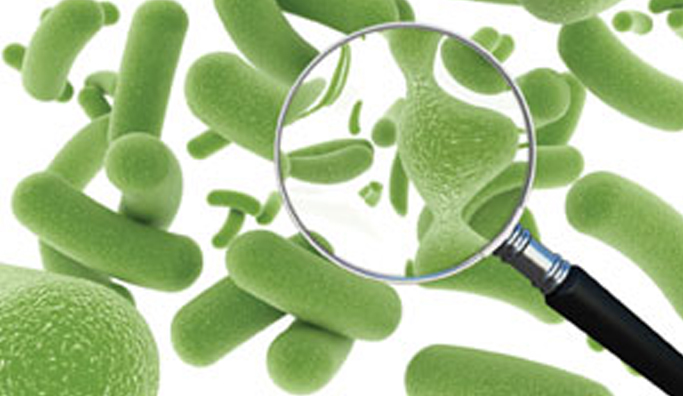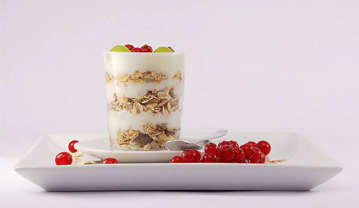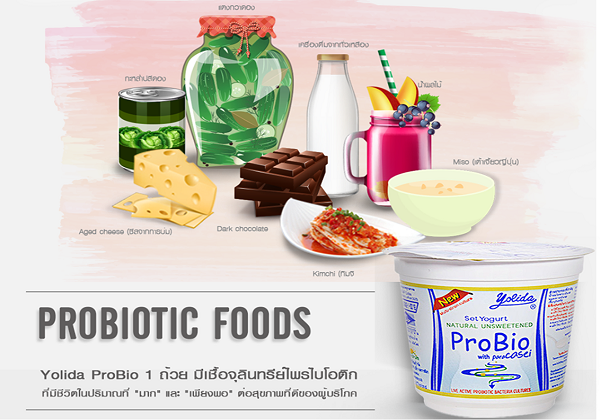WHAT ARE PROBIOTICS?
The Meaning of Probiotic
Probiotic is a word that has been around in academia and food research labs for several decades, mainly in Europe and Japan. But it has only been in recent years that the topic has begun to be discussed more widely in most parts of the world by health professionals, groups promoting healthy food and lifestyle, and indeed the general public.
In the past it was not uncommon for most people to understand that all bacteria were bad and harmful, and caused disease. While this is certainly the case with many types of pathogenic microbes such as listeria, clostridium, and salmonella, to name a few, there are also many types of “good” bacteria that may indeed provide health benefits to people who consume them. The most common of these beneficial bacteria belong to the genera of lactobacillus and bifidobacterium.
The word “Probiotic” has its roots from a combination of the Latin word “pro” and the Greek word, “bios”, meaning “for life” or “to promote life”. Although the definition of probiotic has evolved over time, the most readily accepted one is that which has been adopted by the Food and Agriculture Organization and the World Health Organization of the United Nations, which states that probiotics are “live microorganisms, which when administered in adequate amounts, confer a beneficial health effect on the host”. It is understood that these microorganisms comprise of multiple species and sub-species of bacteria, as well as some species of yeast, and that they do not promote or cause disease.
Probiotic is a word that has been around in academia and food research labs for several decades, mainly in Europe and Japan. But it has only been in recent years that the topic has begun to be discussed more widely in most parts of the world by health professionals, groups promoting healthy food and lifestyle, and indeed the general public.
In the past it was not uncommon for most people to understand that all bacteria were bad and harmful, and caused disease. While this is certainly the case with many types of pathogenic microbes such as listeria, clostridium, and salmonella, to name a few, there are also many types of “good” bacteria that may indeed provide health benefits to people who consume them. The most common of these beneficial bacteria belong to the genera of lactobacillus and bifidobacterium.
The word “Probiotic” has its roots from a combination of the Latin word “pro” and the Greek word, “bios”, meaning “for life” or “to promote life”. Although the definition of probiotic has evolved over time, the most readily accepted one is that which has been adopted by the Food and Agriculture Organization and the World Health Organization of the United Nations, which states that probiotics are “live microorganisms, which when administered in adequate amounts, confer a beneficial health effect on the host”. It is understood that these microorganisms comprise of multiple species and sub-species of bacteria, as well as some species of yeast, and that they do not promote or cause disease.

Probiotics in Food
Given the above definition, it is easy to understand the increasing interest in adding probiotics to food. In recent years this interest has also risen significantly here in Thailand, as consumers have become much more concerned about their health, and how to choose foods which promote good health and well-being.
You can find probiotics in a variety of food such as Japanese miso soup, sourdough bread, and even in chocolate. However, most probiotics are to be found in fermented milk products, including kefir, buttermilk, soft cheeses, and yogurt. By far, the most common of these is yogurt.
Yoghurt has traditionally been made by adding “good” forms of bacterial cultures to milk and leaving it to ferment, which allows the lactose to convert to lactic acid bacteria. Most traditional yogurt is made from a combination of starter cultures of lactobacillus bulgaricus and streptococcus thermophilus. These bacteria, particularly the lactic bulgaricus, provide a health benefit by helping to promote a healthy immune system and helping to keep the gastro-intestinal tract slightly acidic. This slightly acidic environment helps to keep the growth of “bad” bacteria in check.
In order for the yogurt containing these two starter culture bacteria to truly benefit a person consuming it, the lactic bacteria in the yoghurt must be LIVE and ACTIVE and be present in sufficient quantities to actually achieve the stated benefits.
This is where you can be sure of such benefits by choosing YOLIDA. YOLIDA yogurt has a very large quantity of health promoting “good” bacteria that are both LIVE and ACTIVE.
Given the above definition, it is easy to understand the increasing interest in adding probiotics to food. In recent years this interest has also risen significantly here in Thailand, as consumers have become much more concerned about their health, and how to choose foods which promote good health and well-being.
You can find probiotics in a variety of food such as Japanese miso soup, sourdough bread, and even in chocolate. However, most probiotics are to be found in fermented milk products, including kefir, buttermilk, soft cheeses, and yogurt. By far, the most common of these is yogurt.
Yoghurt has traditionally been made by adding “good” forms of bacterial cultures to milk and leaving it to ferment, which allows the lactose to convert to lactic acid bacteria. Most traditional yogurt is made from a combination of starter cultures of lactobacillus bulgaricus and streptococcus thermophilus. These bacteria, particularly the lactic bulgaricus, provide a health benefit by helping to promote a healthy immune system and helping to keep the gastro-intestinal tract slightly acidic. This slightly acidic environment helps to keep the growth of “bad” bacteria in check.
In order for the yogurt containing these two starter culture bacteria to truly benefit a person consuming it, the lactic bacteria in the yoghurt must be LIVE and ACTIVE and be present in sufficient quantities to actually achieve the stated benefits.
This is where you can be sure of such benefits by choosing YOLIDA. YOLIDA yogurt has a very large quantity of health promoting “good” bacteria that are both LIVE and ACTIVE.





